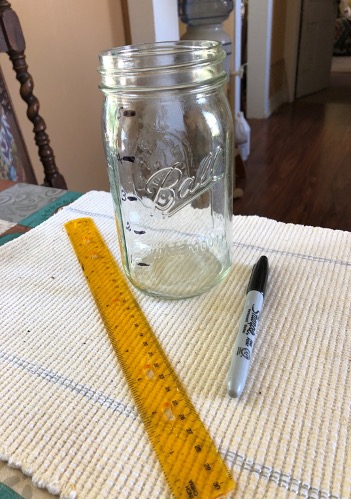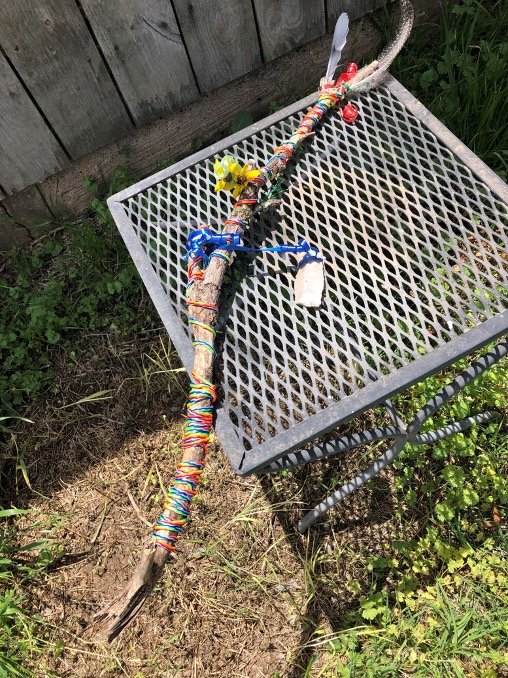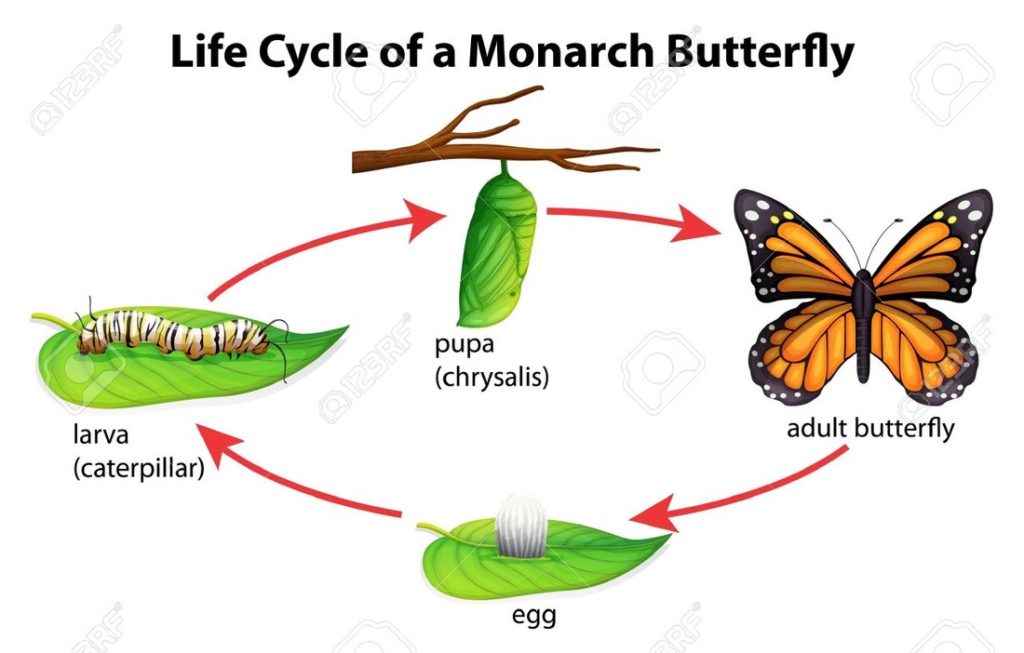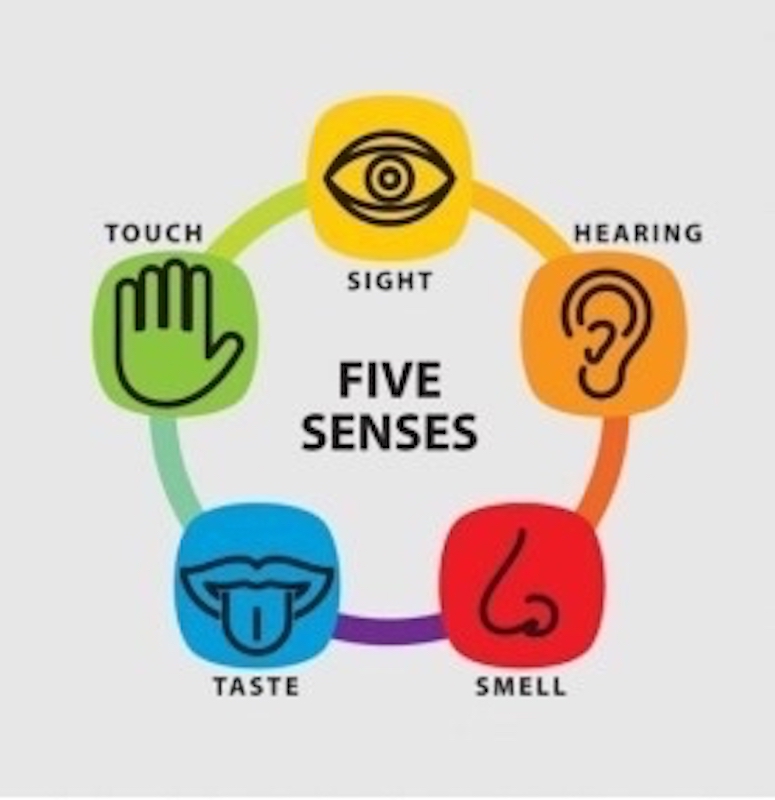Activity #4 – Make your own Rain Gauge
We are so Thankful for Water!
Wonderful water: Every living thing needs water to survive. Humans can live only about 3 days without water. We depend on water for drinking. We need water to grow food. We bathe in water. We need water to make things we use in our lives, from clothes to cars. We are so thankful for water!
We all have first-hand experience with water, every day, every minute. Water surrounds us. It is in the air we breathe. It is in the air as rain, ice, snow, steam, and fog. It is in lakes, streams, rivers, oceans, and glaciers. It makes up most of the volume of plants and animals, including humans. Humans are about 65% water. Your blood is about 80-90% water, and your muscles are about 75% water.
Our planet is often called the Water Planet.
The water we have today is the same water we have always had on Earth. Each drop is used over and over again. If dinosaurs had brushed their teeth, the same water they used would be what we are using today to brush ours. Why is that?
The Water Cycle, of course.
I’m sure you know something about the water cycle, but let’s review.

WATER CYCLE INFORMATION
Evaporation – what is it? Water changes from a liquid state to a gaseous state/vapor.
Condensation – opposite of evaporation. Water vapor or gas is changed into a liquid. Water droplets from condensation get together and form clouds.
Precipitation – small droplets in the clouds form larger droplets and rain drops fall to earth. This is the way water travels from the earth to the atmosphere and back to earth.
Infiltration – this is rain water soaking into the ground and infiltrates through soil and rock layers and helps clean the water.
Transpiration – one final process in the water cycle occurs when plants absorb water from the soil, and it goes up the stems and reaches the leaves, and some evaporates from the leaves, adding water vapor in the air which helps create more chance of clouds forming and more rain falling.
Collection & Surface runoff – rain or precipitation runs off the surface of land and flows down into streams, rivers, lakes, and into the ocean. This is important because a great deal of evaporation occurs in the oceans.
Did you ever wonder about how much rainfall you get in a year in Seymour? Or in Muenster or Gainesville or Jacksboro?
Seymour – 28 inches
Muenster or Gainesville – 38 inches
Jacksboro – 33 inches
Or your hometown – ??
Rainfall is very important. You depend on rainfall. Our farmers and ranchers depend on rainfall to grow their crops and raise their livestock. Have you ever heard people in your town talk about a drought – a shortage of rainfall that leads to a shortage of water? In 2011, Texas was in a drought. Most of Texas got half of their average rainfall. How much rainfall did your town get in 2011 if it only got half of the yearly average?
We know how much rainfall we get because it is measured and you can measure how much rainfall you get at your home with your own rain gauge.
Let’s make our very own rain gauge.

Here is what you need:
1 glass jar (Mason Jar, Spaghetti Sauce Jar, etc) which has been washed clean)
1 plastic ruler
Tape
Step 1: Location – First, find a good location for your rain gauge outside. Make sure it is in a safe place, where it won’t get knocked over or bothered by animals. If you don’t want to wait for the next time it rains, put you rain gauge out under the sprinkler just to test it out.
Step 2: The Gauge – Place your ruler inside your empty jar with the numbers facing out. Make sure the end of the ruler rests on the bottom of the jar and it stands straight up and down. Use a piece of tape on the top of the ruler to hold it in place.
If you don’t want to leave the ruler in the jar – put it in the jar, and then using the ruler as a guide put the numbers on the outside of your jar with a permanent marker. That is the way I made mine.
Step 3: Collect and Record – Place your rain gauge where it will collect water and begin recording your measurements. Record your results and don’t forget to empty your jar after each rain (whether the water comes from the sprinkler or the sky).
In my hometown, the local radio station asks folks to call in rainfall reports. If you have a local radio station, I bet they would appreciate rainfall reports from you.
Have fun,
Mrs. Maddox
—————————————–
Activity #3 – A Native American Talking Stick
Who ever holds the talking stick is given wisdom and courage to speak truthfully and wisely –
Before beginning to make your own talking stick, read the information below about the native American Indians who lived on the Rolling Plains. Read how the talking stick was used and its value and meaning for the Indians in the early days in Texas.
Long before white settlers came to Texas, the Comanche Indians lived in teepees on the grasslands and in the canyons of the Rolling Plains. They rode horses and hunted buffalo. When the tribes held councils (meetings) they often used a talking stick. If you had been 8/9/10/11 years old, your life as a young Comanche Indian child would have included watching your elders at council meetings. You, as an Indian child, would have been taught to listen and to respect others and allow all to speak. Your tribe believed that whoever held the talking stick is given wisdom and courage to speak truthfully and wisely
The Talking Stick was used in Native American gatherings and meetings to give one person the freedom to speak without interruption from the others. It was used by the person who was leading the meeting, and can either be passed around the circle so that each person who has something to say can speak, or it can be given just to those who ask for it. The person with the talking stick is given respect and all listen without interrupting. It usually has a special meaning to the tribe or village, and is decorated with colors and objects which also have special meanings.
Making a talking stick:
To do this activity, you will have to go outside and begin to collect some things. You might want to review the Five Senses activity – remember to take your tools with you – reconnect with nature. When finding what you want… smell it… feel it.. listen to it..see it’s colors and textures.
1. After you have read about Native American culture and how a talking stick was used, you are ready to go outside and to look for a small stick. Pick up several until you find the one that feels good in your hand.
2. When you have found your stick, begin to collect things you might want to attach to your stick – a small rock, maybe a bird feather, a pretty wildflower. Below we have a little more information about the special things you can find outside.
3. When you have collected a few items you can return to your house and look for some string, yarn, or ribbon.
For the Native American, the ornamentation (decoration) on each stick had meaning. In the Comanche tradition, red is for life, yellow was for knowledge, light blue was for prayer and wisdom, white was for spirit, green was for healing, dark blue was for feeling kinship with all living things, black was for clarity and focus. You might think about these colors when you choose the yarn or thread you want to use to attach the items you have chosen.
4. Attach the items you have brought inside with you to your stick by using the string, yarn, or ribbons.
5. Now think about how you might use it with your family, with your team, or at a 4H meeting or some other group activity.
6. Find someone to tell about your talking stick and share why you chose the items for your talking stick.
The stick: When I decided to make a talking stick for myself, I went out into my yard and began looking up into the trees and on the ground for the perfect stick. I would pick up a stick and then put it down, until I found the one that suited me and felt good in my hand.
The rock: I often find flint rock where I live. Flint rock was used by the Native Americans for the tip of their arrows. When I would find a piece of flint, I would look to see if it had been chipped in a way to look like the point of an arrow – thus the name arrowhead. I have several flint arrowheads in my house, so I decided I would attach one to my talking stick. When you find your rock, feel of it, observe it closely, even smell of it.
The yarn, ribbon, or string: I found some multi-colored string and some ribbons. I wrapped my talking stick with the multi-colored string. I chose red, blue, and green ribbons to attach the items to my talking stick. You can read about the meaning of the colors what those colors meant to the Native Americans and figure out why I chose those colors.
The feathers & wildflower: I found 2 different feathers in my back yard out near my bird feeder. The smallest feather is from a guinea that visits the bird feeder when the bird seed has been scattered on the ground. The other feather is from a dove. I picked a chocolate daisy from my flower bed. This wildflower is my favorite and it was used by the Native Americans to flavor their food. Can you guess what that flavor is? If you ever find one, just smell it and you will know.
Here is the talking stick that I made. I hope you have fun making yours.

Mrs. Maddox
Can you find Cowboy Joe in this picture?

—————————————–
Activity #2 – Hurry and the Monarch
A Story of a Long Journey and Metamorphosis —
Hurry the Texas tortoise is starting to think about winter when out of the bright October sky a monarch butterfly lands on his back.
“What do you call this place?” asks the monarch. “The West Ranch garden,” say Hurry. And that’s my back you’re standing on. “West Ranch at Ozona, near the Texas and Mexican border. Not far enough,” says the monarch.
“Not far enough for what? asks Hurry. “For staying,” replies the monarch.
With that the monarch opens her wings and flies off Hurry’s back. Eye level with Hurry now, the monarch seems fascinated with the old tortoise.
“How long have you been here?” asks the monarch. “Seems like forever,” says Hurry.
Maybe one day you’ll break out of that shell, grow wings, and fly away,” says the monarch. “I doubt it,” says Hurry.
“It happened to me,” replies the monarch, thinking about that extraordinary morning when she first opened her wings. “Where did this happen?” asks Hurry.
“Far away, in a place called Canada. In a garden just like this.” “Why did you leave?” asks Hurry.
“The days got colder,” says the monarch. “What do you do when the days get colder?”
“Sleep,” answers Hurry. “Cold days always change back into warm days if you wait.”
“I don’t have time for that,” says the monarch, flying away from the garden.
She joins more monarchs. They turn the sky orange as 1000s of monarchs continue their journey south toward Mexico.
Back in the garden, a cloud passes over the sun and Hurry shuts his eyes. As the weather turns cooler, the old tortoise begins to dream…. The monarch travels on, resting at night in places you would expect a butterfly to rest – on flowers – and sometimes in places you would not – like barbed wire fences.
Each new day brings new sights. Sometimes a day brings danger. Like the windshield of a pickup truck driving fast down a country road. But the monarch survives, flying now over the waters of the Rio Grande River into Mexico.
On and on she flies until finally, one November evening, she finds it. The warm green forest she has been searching for. She will spend the winter here in Mexico. She hangs from a branch, adding her tired wings to the soft murmur of a million others. The monarch in flight from winter knows she has found the perfect place, the butterfly sanctuaries in Central Mexico.
The monarch has traveled almost 2,000 miles, sometimes flying 125 miles a day. Now, think about this, the monarch has never made this trip before and there are no road signs to follow.
Hurry has been spending the winter in the West Ranch garden. Sometime in early spring, he slowly opens his eyes and feels the warmth of the sun.
Then one morning, the monarch also returns. “So where are you going now?” asks Hurry. “Back to the beginning,” answers the monarch. “Do you mean Canada?” asks Hurry. “Possibly,” says the monarch.
“Butterflies can be so mysterious,” thinks Hurry, watching the monarch lay eggs on a milkweed plant. Then she flies away, headed north. In the town of Oklahoma City, she flies in through an open window and thinks it might be nice to rest her worn wings for a while in the folds of a sun-colored curtain. For a while becomes forever.
What has happened? The monarch dies. But she has left something behind. Back in the garden, over by the milkweed plant, Hurry sees a newborn caterpillar.
“Hello,” says Hurry, but the caterpillar doesn’t answer. He is too busy eating the milkweed leaves.
Hurry watches and waits as the caterpillar grows, shedding skin after skin, (4 times) and finally crawling away to hide under a twig. But this garden is Hurry’s whole world and there is little in it that is hidden from him.
In the weeks that follow, Hurry sees an amazing transformation happen right in front of his still and patient eyes.
What is happening? A new monarch emerges from the shell, (chrysalis) wet and wrinkled.
For a while, the monarch clings to its empty shell, waiting for his wings to expand and dry in the warm sunshine. After a few hours, the monarch spreads his strong new wings and flies toward Hurry, landing on his back.
“What do you call this place?” asks the monarch. “Here we go again,” says Hurry as the monarch opens his wings and flies off Hurry’s back.
“What’s your hurry?” asks Hurry. “I’m off to see the world. What do you think it’s like?” asks the butterfly.
“I imagine —-“says Hurry slowly, “I imagine that it’s like my garden. A place full of astonishing things.”
“I can’t wait,” says the young monarch, flying away on its way north for the summer.
THE END
By Peggy Maddox
Check it out: National Butterfly Center
DID YOU KNOW:
The monarch that flew from Canada to Mexico lives about 8 months. Then the monarch who starts the journey back to Canada will live the usual butterfly life span – between 4 & 6 weeks. It will take several generations of monarchs to reach Canada. That’s why it is so important to plant milkweed for the monarch to lay eggs and feed the caterpillars who hatch and turn into more monarchs.
The tortoise can live up to 100 years or more.
The monarch butterfly is the state insect of Texas.
THINGS TO THINK ABOUT:
- What is a tortoise?
- What is the complete life cycle of the butterfly called?
- What are the 4 stages of the complete life cycle of a butterfly?
- What does the word sanctuary mean?
- Go outside and count the butterflies you see. What colors are they?
- Would you like to plant some milkweeds for the monarchs?
Tell your teacher to let KOL know and we will send you some.
Metamorphosis

—————————————–
Activity #1 – Let’s Go Outside
YOUR FIVE SENSES
By taking a walk outside (just in your yard by yourself or with your family), we hope you will feel reconnected to nature.
Don’t forget those tools you have: YOUR FIVE SENSES – Sight, Hearing, Smell, Taste, and Touch

Take your tools…your 5 senses outdoors with you.
Begin by taking a deep breath – Breathing in and Breathing out. You may want to put your hand on your tummy and feel your hand going in and out.
Next
- What do you hear? Listen to the sounds all around you.
- What do you see? Look at the colors of the sky, the trees, the grass, everything.
- What do you feel? Feel the breeze (the wind) on your skin. Are hot, cold, warm, or cool?
- What do you smell? Smell the air. Are there other smells in the air?
- What do you taste? Taste your lips, taste the air.
Take another deep breath – Breathing in and Breathing out.
Thank your senses. Thank yourself for finding your outside place. “ Nature is alive.”
————————————————————————————————————————–
